
Between Moon Bears and Sun Bears and Why They Both Are Distinct
As we have demonstrated in previous articles on our website, scientists have classified all living organisms, including bears, into seven different levels to make their studying a bit less difficult. These levels are known as the taxonomic hierarchy.
The most general level in this hierarchy is the kingdom. There are five kingdoms to which living organisms belong. For instance, all animals, birds, and fish belong to the Animalia kingdom. On the other hand, rusts and mushrooms belong to another kingdom called fungi.
A more specific level of the taxonomic hierarchy is the family. Members of every family share many similarities. Yet, as long as they cannot interbreed, they are considered different. For instance, the cat family includes all types of big cats such as lions, cheetahs, tigers, and jaguars as well as all the small cat species—around 40—like the Siamese cats.
To help study different members of the same family closely, scientists have further classified each one of them into a species. That means, lions are a species and tigers are a totally different species.
Likewise, there are eight different bear species found on Earth. In previous episodes on our website, we discussed the giant panda and the polar bear. In today’s article, we are going to take you on an adventure to learn about two more bear species that are no less spectacular.
Even more, they are quite distinct given that they are called the moon bear and the sun bear.
Moon bear
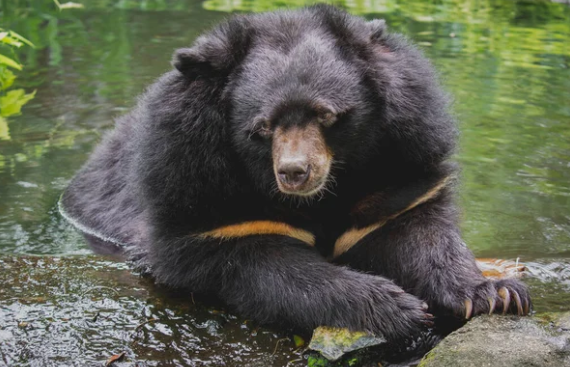
The moon bear is one of the eight bear species found on Earth. It looks so much like the American black bear. The reason for that is super simple: because they are cousins!
The moon bear appeared on Earth about three million years ago. It descended from a bear ancestor that was native to Europe. Interestingly, the American black bear also descended from the same European ancestor.
Both bear species share many similarities. They are more closely related together than to any other bear species in a way that interbreeding is possible. This means a female from one species can mate with a male from the other species to produce hybrids.
Where did the name ‘moon bear’ come from?
Well, the moon bear is, in fact, a nickname.
The real name of the moon bear is the Asian black bear or the Asiatic black bear, referring to the bear’s original habitat in Asia. That said, the nickname ‘moon bear’ came from the V-shaped creamy-coloured crescent on the bear’s black chest. That is why the bear is also sometimes called the white-chested bear.
Interestingly, without that creamy crescent on the moon bear’s chest, it would be relatively hard to tell the moon bear from the American black bear.
Having said that, a male moon bear is called a boar, a female is a sow, and the offspring are cubs.
Where in Asia can the moon bear be found?
As its original name implies, the moon bear is native to Asia. More precisely, the moon bear can be found in the Himalayas, North and South Koreas, Iran, Afghanistan, Pakistan, India, China, Taiwan, Japan, and the easternmost parts of Russia.
The moon bear usually lives in the forest. In the Himalayas, which is a mountain range, the moon bear lives at an altitude of 3,500 m and sometimes 3,700 m. This only happens in summer, but in winter, the bear goes down to a lower altitude, about 1500 m above sea level.
How long does the moon bear live?
Well, for quite some time.
When conditions in the wild are fine, food is available, weather is bearable, and the habitat is safe, the moon bear lives around 25 years. When extra human-offered care is provided, moon bears kept in zoos and conserves can live up to 32 years. The oldest reported moon bear died at the age of 44.
That said, the moon bear is encountering a set of dangers that are affecting its population in the wild. From poaching for its skin and paws to cutting down trees and building roads, the moon bear is highly threatened.
As a result, the moon bear was listed as ‘vulnerable to extinction’ by the International Union for Conservation of Nature (IUCN). This means the bear is at a high risk of going extinct if no action to protect and conserve it is taken.
What does the moon bear look like?
Like its cousin the American black bear, the moon bear has a giant body covered with a black fur coat with that white V-shaped patch on the chest. The moon bear has slightly rounded and relatively long ears, at least compared to other bears. The muzzle is light brown which makes a perfect match with the creamy crescent on the chest.
There are very few differences between males and females, one of them is weight.
Male moon bears weigh between 60 kg and 200 kg. Moon bears kept in zoos can, however, weigh up to 225. On the other hand, the female’s weight ranges from 40 kg to 125 kg. The heaviest female moon bear was found to be 140 kg, which is still just the average weight of the male.
Males and females nevertheless almost have the same height. At the shoulders, they measure 70-100 cm. They also have a total body length, from muzzle to tail, of 120 cm to 190 cm. Speaking of the tail, it is about 11 cm long, which is shorter than that of the American black bear as well as the giant panda bear.
The moon bear has claws on all four feet. However, the front claws are longer than the back ones—3.7 cm on average compared to 2.7 cm. These claws are sharp and hooked which enables the bear to climb trees and dig holes. These two activities are quite important for the moon bear as we will see in a bit.
Thanks to these claws, the moon bear is one of the best tree climbers. That is also allowed because the moon bear’s upper body and front limbs are strong. They are so strong that they make up for the bear’s weak and relatively short back limbs. It is said that a moon bear can efficiently climb trees even if its back legs were broken. What an ability!
Another thing that makes the moon bear distinct from the other bear species is its ability to walk upright for a long distance, around 400 m at a time. This is something no other bear can do.
In addition, the moon bear happens to be a good swimmer and a good runner too. It can run at a speed of 40 km/h. This is the same maximum running speed as the polar bear. But it is still slower than the American black bear which can run up to 56 km/h.
What does the moon bear eat?
One interesting thing about the moon bear is that it eats a variety of things. From insects, eggs, and mushrooms to fruits, cherries, herbs, and grains. Whatever is available will be for lunch. Animals that have such a wide range of favourite foods are called omnivorous.
Every animal is active at a certain time of the day during which it looks for food. Animals that feed in sunlight are called diurnal. And those which like to feed at night are called nocturnal. Interestingly, moon bears are both diurnal and nocturnal. That does not mean they never sleep. But their activity time changes according to circumstances.
For instance, when moon bears live in habitats that are near to humans, they tend to go out and forage during the night. This is to protect themselves and avoid conflicts with or getting hunted by humans. On the contrary, if the bear habitat is quite safe and far away from humans, they become active during the day.
Still, food is never always available. During the times when food is plentiful, moon bears choose the high-calorie foods and eat a lot of them. They do this to gain weight and increase the fat percentage in their bodies. This way, moon bears can survive the times when food is scarce.
How does the moon bear reproduce?
Moon bears are not able to settle down and start a family unless females are three or four years old and males are four or five years old. Mating happens in different months based on where the bears live. For instance, moon bears found in Russia mate from June to mid-August while in Pakistan, for instance, mating occurs in October.
A female usually is pregnant for 6.7 to 8 months. Then she gives birth to one and up to four cubs at a time. That said, most females usually give birth to two cubs. Birth typically happens in early January if mating happens in summer. Females usually choose safe and a little far places to give birth in, such as caves.
At birth, cubs are extremely helpless and tiny. This is quite strange since the parents are really large. Cubs also take a long time to grow even though they nurse every day. For instance, it takes them up to four months to only grow to 2.5 kg. That is why they continue to nurse for almost two years and a half. When they reach three years old, they become independent. So they go away from their dens and start looking for food themselves.
As we have mentioned earlier, the moon bear and the American black bear are able to interbreed and produce hybrids because they are very much alike. Moon bears can also breed with other similar bear species. Some of these species are the spectacled bear (a bear species living in South America), the brown bear, and the sun bear which we will demonstrate later on.
How many moon bears are there in the world now?
Despite having such a large habitat that extends almost all across Asia, there is thought to be around only 50,000 moon bears left. This is not a large number at all. In fact, the population of the moon bear is declining significantly.
One reason why the moon bear is threatened is due to habitat loss. Humans cut down trees because their population is increasing and they need to find new areas to live in. This dramatically destroys the poor animal’s habitat, affects the availability of food, and generally disturbs the moon bear.
In addition, moon bears may get attacked and eaten by other predators in the area such as tigers. Because moon bears have strong claws, they will climb trees to run away from them. Some tigers, however, pretend to leave and wait for the bears to come down and then attack them. Other tigers might mimic special bear vocalisation to attract them and then, again, take them down. How sly!
That said, moon bears in general are not very prone to tiger attacks. First off, tigers usually attack young bears. But once those bears grow to adulthood, they are able to fight tigers back and win them over. Sometimes, adult moon bears even steal tigers’ prey, but of course when the tigers are not around.
In addition, as moon bears live in hollow trees, land depressions, and valleys, they are kept away from tigers.
Besides tigers, other predators do attack moon bears, such as their cousins the brown bears. On the other hand, leopards, wolves, and lynxes prey on moon bear cubs.
Are there other threats moon bears are facing?
Well, unfortunately, yes. And they are imposed by humans.
Moon bears have been hunted for their different body parts such as the fur and the paws. Many tribes in Asia hunt moon bears to take their skin, meat, bile, and even their gallbladder. These parts are used to make traditional medicine which is thought to treat several diseases.
Poaching, which is the illegal killing of animals, is very common in Asia as well. But since the moon bear is so large and is also a predator, poachers use sneaky ways to catch it. From shooting using hunting rifles to setting traps in its habitat, the moon bear is killed in large numbers.
That said, if the hunter or poacher fails to kill a moon bear but only got it injured, the injured bear becomes extremely dangerous and can potentially kill the poacher in such a situation.
| Both hunting and poaching involve the killing of animals to take advantage of their different body parts. However, hunting is legal. That means it is permitted by the government. So people with hunting licences are not punished when they kill animals. On the contrary, poaching is illegal and poachers are subject to punishment. For instance, hunting may be allowed in some open habitats. But if a country decides to turn this area into a national park, hunting there will immediately become prohibited. If it happened, however, it would become a punishable act of poaching. |
Humans also steal cubs and sell them as pets. Farmers are known to kill the moon bears that kill their livestock and damage their crops. Moon bears usually do that when food is scarce.
In addition to that, humans do kill moon bears because they are a threat to them. Moon bears were seen to have aggressive behaviour towards humans. They even sometimes attack them out of nowhere. In such attacks, moon bears can deeply wound and even kill humans because they use both their sharp claws and teeth.
Many countries have issued laws to limit the hunting and poaching of the moon bear and therefore protect it. However, the problem seems too big to be tamed. As a result, the population of the moon bear has been declining dramatically.
That got the animal classified as ‘vulnerable to extinction’. That means if all the threats we mentioned earlier are not stopped and special care is dedicated to improving the moon bear’s reproduction rates, it will just go extinct.
Do moon bears live in families?
Well, most of the time, yes.
Interestingly, moon bears live in families of a father, a mother, and two generations of their offspring. They live together in the same range, climb the same trees, and feed on the same food. Interestingly, when they walk together, they walk in a line in order of size. So the father goes first, then the mother, followed by the cubs from largest to smallest.
Because they are very good climbers, moon bears spend half of their lifetime in trees. This is where they like to eat, take a rest, sunbathe, and run away from predators that cannot climb trees.
What is the moon bear’s year-long activity?
Moon bears tend to live pretty normally during spring, summer, and most of the autumn season. During that time, they seem to migrate to the jungles at higher altitudes. There, they go out, search for food, breed, and raise cubs. But as winter approaches, they get down to get ready for the cold season.
Hibernation is a state that many animals go through during harsh seasons or when food is unavailable. During hibernation, the animal sleeps deeply, lowering its physical activity to the absolute minimum. This way, its body will not burn fat quickly since there is no physical activity. This way, the animal will be able to survive for months until food is available again.
Moon bears also go through hibernation during winter. As we have mentioned earlier, when food is abundant during spring and summer, moon bears eat a lot to gain more weight and increase their body fat percentage to survive winter.
So in mid-October, the bears start preparing their dens for such a long sleep. They descend from the high altitudes they lived at during summer and dig their dens at much lower altitudes. Dens are dug either in large trees, in the ground, or on mountain slopes.
Moon bears may also hibernate in caves or occupy abandoned brown bear dens. Once the den is ready and winter has arrived, most, if not all moon bears, get into their dens and sleep from November up until March.
When spring starts, moon bears come out of their dens. Males are usually the first to go out then non-pregnant females. Mothers come out last, having to spend as long as they can nursing their cubs.
Now that we have demonstrated enough information about the moon bear, it is time to move to the sun bear.
Sun bear
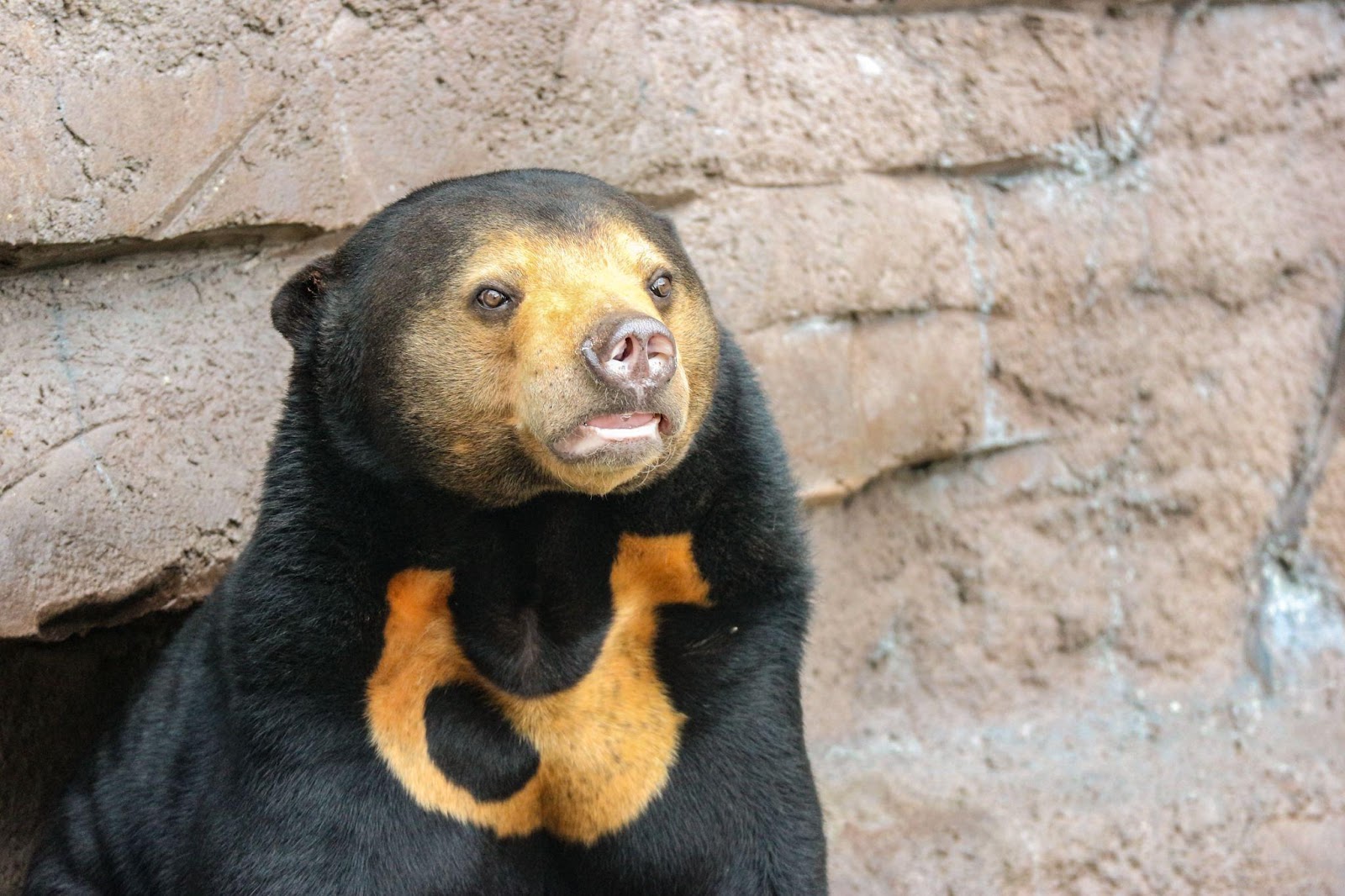
The sun bear is another dark-coloured bear species that is native to Asia. That said, it is never really referred to as the Asian black bear like the moon bear. The reason for that is quite unknown—at least to me.
The sun bear is the smallest bear species. Because it is also black and somehow resembles both the American black bear and the moon bear, it is thought to have descended from them around six to five million years ago.
Despite that, humans got to know about the sun bear only in the early 19th century. This happened when an American naturalist called Thomas Horsefield discovered the animal by mere coincidence while he was working in Borneo.
| Borneo is the third-largest island in the world. It is located in the Pacific Ocean and is currently shared between three countries: Indonesia, Malaysia, and Brunei. |
Just like the Asian and African elephants, the sun bear does have two subspecies: the Malayan sun bear and the Bornean sun bear. The Malayan sun bear lives on mainland Asia as well as Sumatra Island in Indonesia. On the other hand, the Bornean sun bear lives, yes, in Borneo. There are tiny differences between these two subspecies, most of them are in size.
It is not really known how old sun bears can get in the wild. But when kept in zoos, they reach the age of 20 years and sometimes more. The oldest sun bear was found to have lived for a total of 31 years.
Where did the ‘sun bear’ name come from?
Just like the moon bear, the sun bear was called so because it has a U-shaped creamy patch on its dark chest. As the patch is sometimes circular, the bear was called the sun bear, leaving the moon bear name to the Asian black bear whose chest patch always looks like a crescent.
Interestingly, this bear is sometimes referred to as the honey bear. This comes from its love for and dedicated pursuit of honey, just like Winnie the Pooh.
Where can the sun bear be found in Asia?
Unlike the moon bear which inhabits a large area of the Asian continent, the sun bear is exclusively found in southeast Asia. That includes parts of China, India, Indonesia, and Malaysia, Bangladesh, Myanmar, Thailand, Cambodia, Laos, and Vietnam.
And again, unlike moon bears, sun bears live in the tropical forests at different altitudes. These forests are characterised by year-long rain and hot, humid weather. In some countries, sun bears may live below an altitude of 1,200 m above sea level. In other countries, they go up to 3,000 m. Some sun bears also like to live in the frozen Himalayas.
What does the sun bear look like?
Despite almost resembling the moon bear including that patch on the chest, there are significant differences between the two bear species.
As we have mentioned, the sun bear is the smallest bear species. It is usually 100-140 cm in body length and is about 70 cm tall at the shoulders. Adult sun bears weigh between 25-65 kg. Such a wide weight range refers to the difference between the two species as well as between males and females.
Sun bears have light brown, creamy snouts. They have exceptionally long tongues which can reach a length of 25 cm! Their jaws are powerful jaws and their teeth are large. Ears are small but their heads are big in relation to the body.
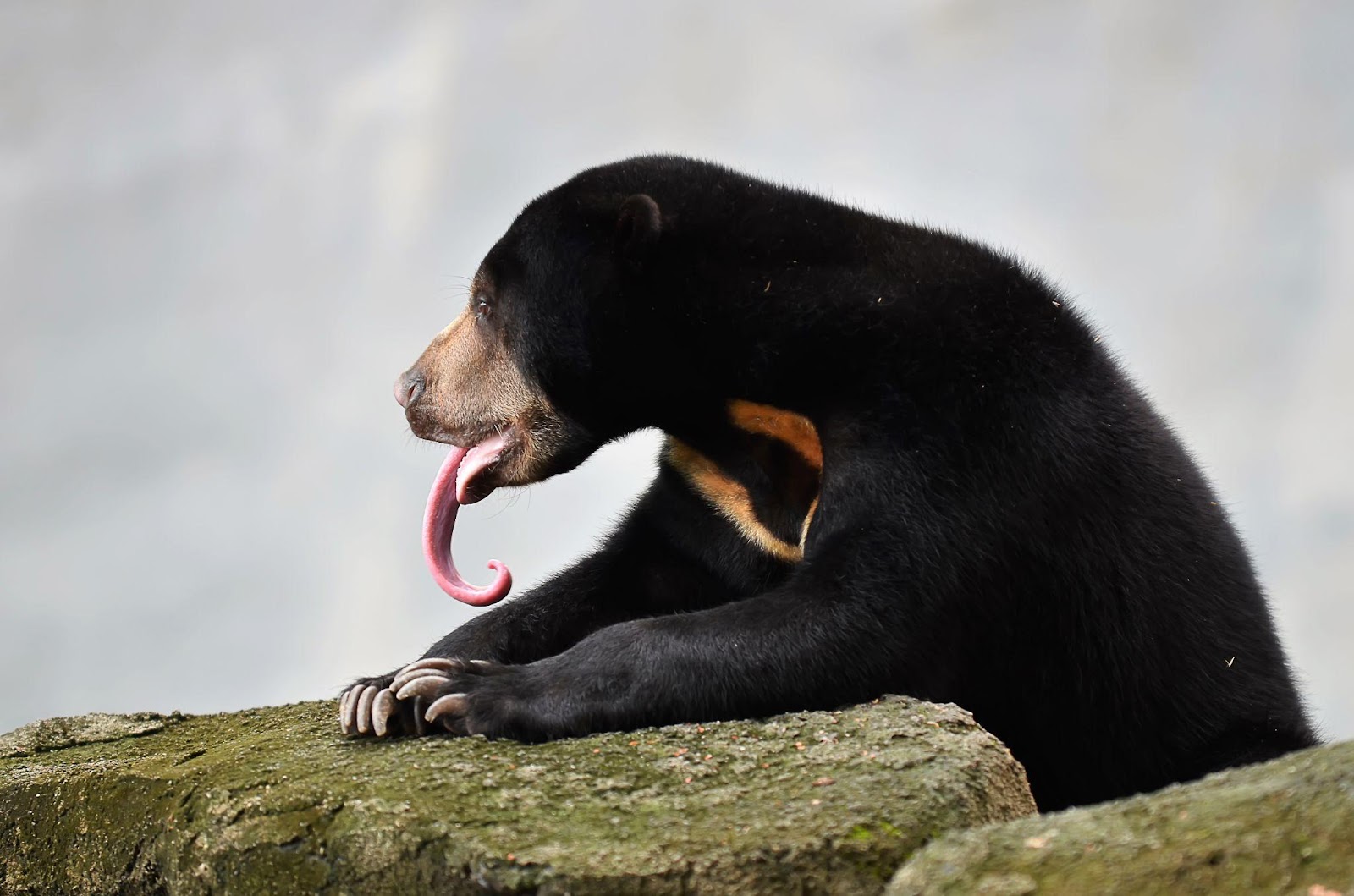
The sun bear’s body is covered with a black fur coat which can sometimes be either reddish-black or even grey. Yet, the fur hairs are quite short. This is quite uncommon among bears and many species with fur coats.
That is because all the other animals that have long-haired fur coats usually live in places where winter is harsh. So the fur works as a protective cover against the cold to keep the body warm. On the other hand, sun bears live in a hot habitat. So they do not need heavy fur.
Does the sun bear possess any special skills?
Well, yes. Yes, it does.
The sun bear is a perfect tree climber thanks to its sharp claws. Sometimes, trees can be as tall as 7 m above the ground. This is where the bear likes to sunbathe and sleep. Animals that live in trees are called arboreal.
In addition, the sun bear is a very good swimmer.
The sun bear might be sharing such skills with the moon bear and the sun bear. However, it is distinct from the moon bear by its intelligence. According to an observation of a zoo-kept sun bear, the bear used its sharp claw to unlock a cupboard where it saw someone keep sugar.
In addition, the sun bear is able to make different facial expressions. Such a thing is only exclusive to humans as well as orangutans, gorillas, chimpanzees, and bonobo. Moon bears cannot do that.
What about the sun bear’s diet?
Like the moon bear, the sun bear mostly goes out to look for food during the day. And it does change its activity time from daylight to night when humans are around.
Sun bears are also omnivores. If you recall from above, omnivorous animals are those that eat a large variety of things. For the sun bear, it typically feeds on insects, seeds, some birds, and eggs. Sometimes, it eats reptiles such as snakes, turtles, and lizards.
Since they love honey very much, sun bears obsessively look for it in hollow trees. Once they find it, they lick it all with their strong, long tongues. Sun bears also like fruit and eat special kinds of it. If fruit is not available, the sun bear’s diet will mostly consist of insects.
Sun bears live in tropical forests, which are characterised, besides high temperatures, by the availability of food year-round. That means sun bears do not need to hibernate.
How do sun bears breed?
Sun bears are able to breed and start a family when they are three to four years old. Unlike moon bears that mate at specific months, sun bears can mate at any time of the year.
Females stay pregnant for 95 days and up to 240 days. As they approach labour, they try to find safe places to give birth in. An example of this is hollow trees. Females give birth to one or two cubs.
Sun bear cubs are born blind, deaf, and incredibly small. One newborn cub only weighs 325 g. Their fur is light and is rather a little grey than totally black. After 25 days, cubs open their eyes, but they are still unable to see. It is not until they are 50 days old when they can fairly recognise things.
Besides food, cubs depend on their mothers for protection which is a responsibility mothers take very seriously. They sometimes even become aggressive to keep their babies safe.
Normally, cubs stay with their mothers until they are about three years old. Then, they become independent, walk away from the den, and move on with their own lives.
We saw that moon bears can live in families. But it is not the same case with sun bears as they are rather solitary. They, especially males, like to spend time on their own. Only mothers and cubs can be seen together.
Do sun bears face any threats?
That is, unfortunately, a sure thing.
The sun bear has been facing great challenges at least for the past 30 years. This has caused the bear population to decline dramatically in numerous areas. The reasons for that are various, and sadly human-made.
The first threat is climate change. The continuous rise in temperature in the sun bear’s habitat has caused rivers and lakes to dry. Such a condition is called drought. Food resources are becoming scarce extremely fast as well.
Though the sun bear eats a large variety of things, sometimes it cannot find food due to wildfires. Wildfires are severe weather events in which trees ignite either by an extreme rise in temperature or a lightning bolt. The fire spreads incredibly fast by the wind and becomes hard to put down. Sometimes such wildfires continue for months like the 2019-2020 destructive wildfires in Australia which lasted for four months. These events burn everything to the ground.
Another reason that is dreadfully affecting the sun bear population is habitat fragmentation. This simply means that the animal’s large habitat is being divided into several areas. Each area hence becomes isolated from the others, just like an island.
Habitat fragmentation limits the sun bear to small, unconnected areas. It stops it from looking for food in other areas if it is scarce in its home range. In addition, the bear cannot move away in case it faces close dangers.
Another bad consequence that habitat fragmentation imposes is inbreeding. Sun bears imprisoned in one isolated area are forced to inbreed; to mate with their close relatives. In some cases, inbreeding can be dangerous. If one sun bear carries a certain disease or even a defective, rare gene, there is a risk of passing them down to the next generations.
What causes habitat fragmentation is cutting down trees and building roads. This is usually known as logging. As we have seen with the moon bear, this happens because humans need to find new areas they can live in, since their population is rapidly increasing.
In addition, sun bear cubs are kidnapped and sold as pets. Adult sun bears are hunted for their body parts to make traditional Asian medicine. Some predators were seen to attack sun bears. However, this does not happen as frequently as with moon bears.
All of these have caused the sun bear population to decline drastically. As a result, it was classified by the IUCN as ‘vulnerable to extinction’. The poor animal is at risk of going extinct unless the threats it faces are lifted and unless special care is dedicated to conserving it and encouraging reproduction.
Conclusion
Now we get to the end of today’s zoology adventure in the Asian wild.
In this article, we discussed both the moon bear and the sun bear. Though both bears live in Asia, only the moon bear is referred to as the Asian bear. We displayed some of the many similarities as well as differences between the two black bear species.
Despite both being native to Asia, the moon bear is much larger and lives in a wider habitat than that of the sun bear. They two may have black fur but the hairs are different in length. And even though both animals have a creamy patch on their chest, the moon bear’s patch is crescent-like while the sun bear’s patch is almost circular. And this is where their nicknames came from.
Both bears are perfect tree climbers and swimmers. However, the moon bear can walk upright for a relatively long distance. On the other hand, the sun bear is characterised by its intelligence and love for both honey and solitude. That said, both animals unfortunately face great threats that can potentially lead them to extinction.
We hope you enjoyed today’s lesson as much as we loved writing it for you. Tell us in the comments which bear you find more interesting and how you think we can protect both of them from going extinct.
If you enjoyed learning about this facinating animal why not check out more fantastic facts about other animals: Koalas, Land Animals, Sharks, Raccoons, Rats, Sheep, Chickens, Cats, Pandas, Monkeys and Whales.
Why not subscribe for as little as £1.99 per month to access over 1000 fun educational videos!
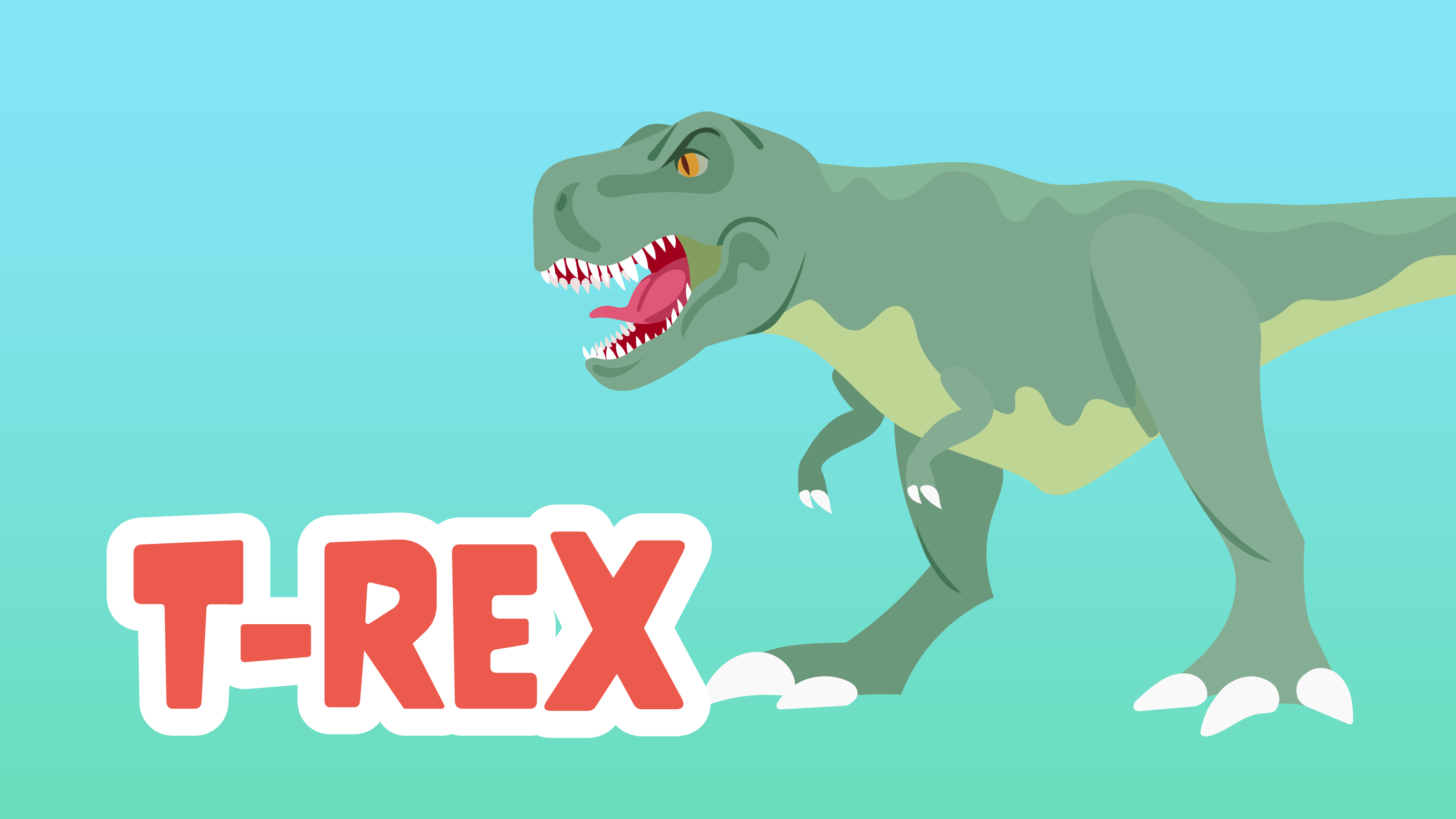
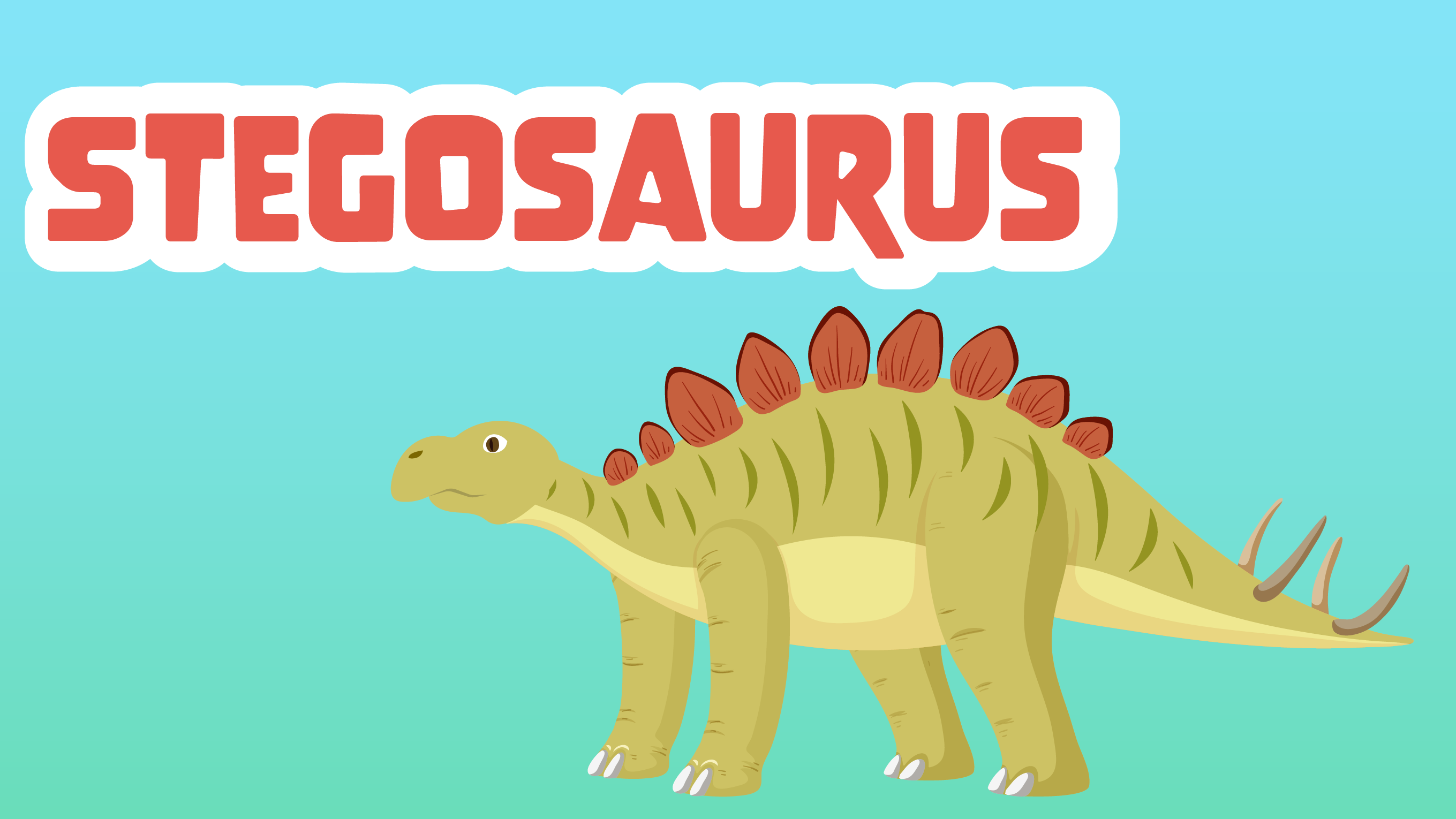
Leave a Reply